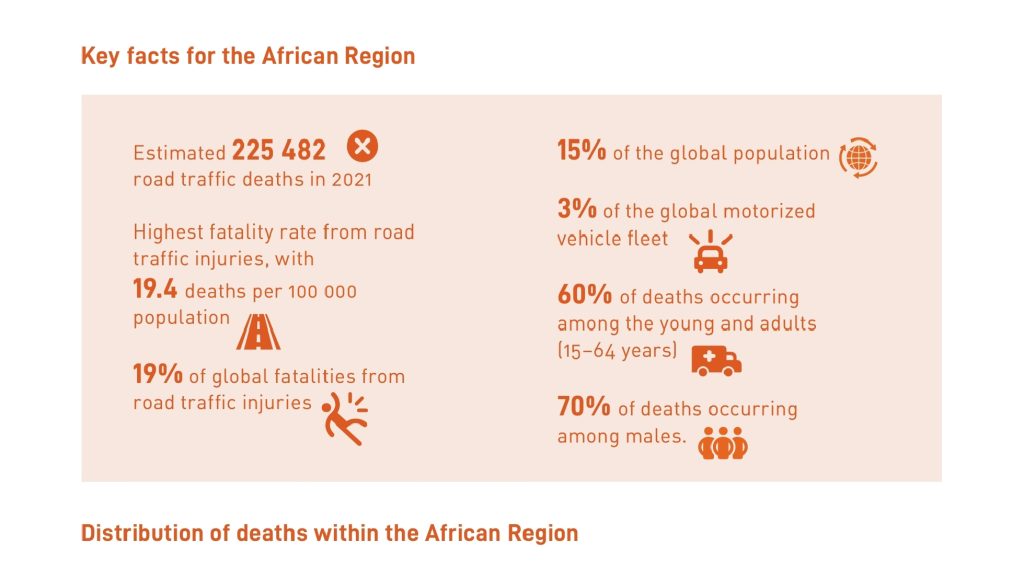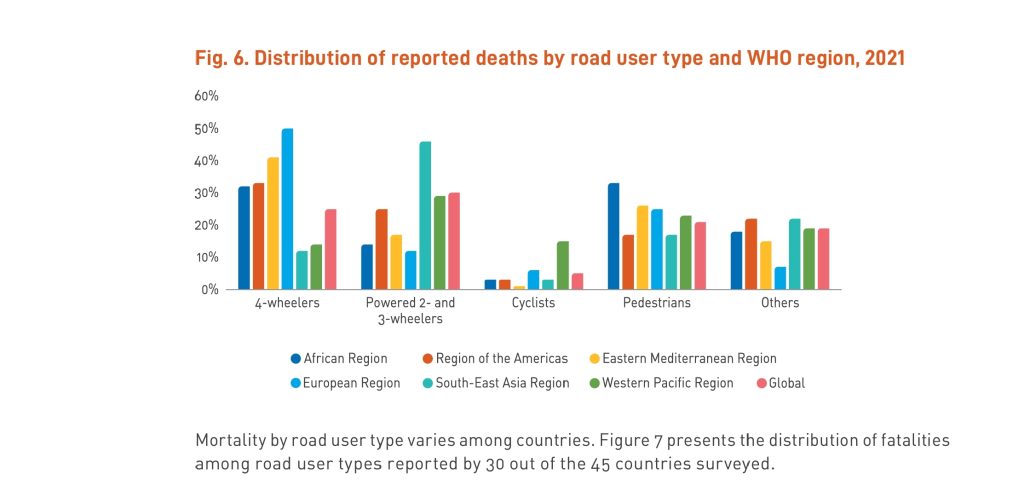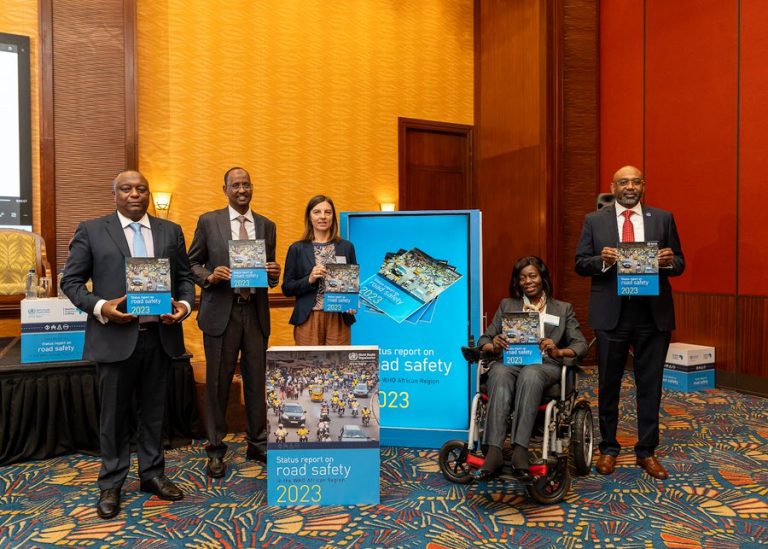The “2023 Status Report on Road Safety in the WHO African Region” presents a detailed assessment of road safety in the WHO African region, revealing an increasing burden of road crash injuries and fatalities, especially among vulnerable road users like pedestrians and cyclists.
In this analysis, ASHENEWS highlights both progress in certain countries and significant challenges, including insufficient legislation, weak enforcement, and inadequate post-crash response systems. It revealed how rapid urbanization further complicates the road safety landscape, necessitating innovative and sustainable transportation policies.

The 2023 status report on road safety in Africa highlights the critical need for targeted road safety interventions and improvements in legislation, infrastructure, and public awareness to reduce the high burden of road traffic injuries and fatalities in the African region
Key statistics and findings
Regional Overview: In 2021, the African region had an estimated 225,482 road traffic deaths, accounting for 19 per cent of the global burden, despite only having 15 per cent of the global population and 3 per cent of the global vehicle fleet.
Fatality rate: The African region holds the highest fatality rate globally, at 19.4 per 100,000 population.
Vulnerable road users: Vulnerable road users such as pedestrians, cyclists, and motorcyclists account for 50 per cent of all fatalities.
Disparity in legislation and infrastructure: There are significant gaps in road safety legislation and infrastructure across many African countries, contributing to higher fatality rates.
Analysis
1. Current state of road safety
– Increasing burden of road traffic injuries: The report underscores that road traffic injuries and fatalities are rising in the African region at a faster rate than any other region.
With a significant increase of 70 per cent in road traffic deaths from 192,682 in 2010 to 225,482 in 2021, this shows that road traffic deaths increased by nearly one-fifth, with almost a quarter of a million people killed on Africa’s roads within that decade. It also shows that the African region faces a severe public health challenge.
– High vulnerability of non-motorized road users: The African region has the highest proportion of pedestrian deaths globally, accounting for one-third of global fatalities. The report indicated a need for focused interventions to protect the most vulnerable road users, including motorcyclists, cyclists and users of two or three wheeler vehicles.
2. Progress and challenges:
– Positive trends in some countries: Despite the overall negative trend, the report highlights that over one-third of African countries have made significant progress in reducing road traffic deaths, showcasing that effective road safety measures can lead to substantial improvements.

– Uneven progress: The uneven progress across the region points to varying levels of commitment, resource allocation, and implementation of road safety measures.
3. Urbanization and transportation:
– Rapid urbanization: Sub-Saharan Africa’s rapid urbanization necessitates innovative transportation solutions. The reliance on personal automobiles is unsustainable, highlighting the need for safe and efficient public transport systems.
– Sustainable transport policies: The report advocates for the development of sustainable transportation policies that prioritize the safety and accessibility of all road users.
4. Legislative and governance gaps:
– Inadequate legislation: Many countries lack comprehensive road safety laws that align with WHO best practices .This legislative gap is a significant barrier to improving road safety.
There is a need for comprehensive legislative frameworks that address all risk factors and establish minimum safety standards for vehicles and infrastructure.
– Need for stronger enforcement: Effective enforcement of existing laws and the establishment of minimum safety standards for vehicles and infrastructure are crucial for reducing road traffic injuries and fatalities.
5. Post-crash response:
– Improvement needs: Enhancing post-crash response systems, including prehospital care, emergency treatment, and rehabilitation services, is essential for reducing the impact of road traffic injuries.

– Equitable access to care: The report emphasizes the importance of integrating post-crash care into health systems and ensuring equitable access as part of universal health coverage.
6. Data and research:
– Critical data gaps: Improved data management systems are necessary to support road safety initiatives. Accurate data on injuries, impairments, and enforcement activities are vital for informed decision-making.
– Implementation research: Investment in implementation research tailored to the African context is needed to identify successful interventions and facilitate knowledge sharing across the region.
Key recommendations from the report
– Developing sustainable transport policies: Address the safety and accessibility needs of all road users through sustainable transportation planning.
– Strengthening legislative frameworks: Align road safety laws with WHO best practices and ensure effective enforcement.
– Enhancing post-crash care: Improve post-crash response systems and integrate them into universal health coverage.
– Investing in data and research: Build robust data management systems and invest in research to support evidence-based road safety interventions.
The report calls for coordinated action, political will, and investment in road safety to address these challenges and improve the safety and well-being of all road users in the African region.


